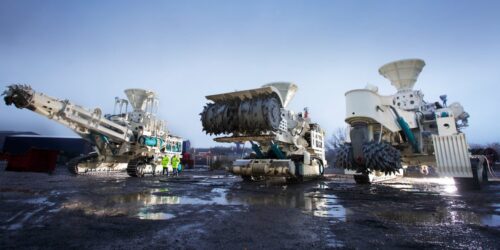A short bureaucratic note from a brutally degraded microstate in the South Pacific to a little-known institution in the Caribbean is about to change the world. Few people are aware of its potential consequences, but the impacts are certain to be far-reaching. The only question is whether that change will be to the detriment of the global environment or the benefit of international governance.
In late June, the island republic of Nauru informed the International Seabed Authority (ISA) based in Kingston, Jamaica of its intention to start mining the seabed in two years’ time via a subsidiary of a Canadian firm, The Metals Company (TMC, until recently known as DeepGreen). Innocuous as it sounds, this note was a starting gun for a resource race on the planet’s last vast frontier: the abyssal plains that stretch between continental shelves deep below the oceans.
In the three months since it was fired, the sound of that shot has reverberated through government offices, conservation movements and scientific academies, and is now starting to reach a wider public, who are asking how the fate of the greatest of global commons can be decided by a sponsorship deal between a tiny island and a multinational mining corporation.
The risks are enormous. Oversight is almost impossible. Regulators admit humanity knows more about deep space than the deep ocean. The technology is unproven. Scientists are not even sure what lives in those profound ecosystems. State governments have yet to agree on a rulebook on how deep oceans can be exploited. No national ballot has ever included a vote on excavating the seabed. Conservationists, including David Attenborough and Chris Packham, argue it is reckless to go ahead with so much uncertainty and such potential devastation ahead.
Louisa Casson, an oceans campaigner at Greenpeace International, says the two-year deadline is “really dangerous”. Given the potential risks of fisheries disturbance, water contamination, sound pollution and habitat destruction for dumbo octopuses, sea pangolins and other species, she says no new licences should be approved. “This is now a test of governments who claim to want to protect the oceans,” she said. “They simply cannot allow these reckless companies to rush headlong into a race to the bottom, where little-known ecosystems will be ploughed up for profit, and the risks and liabilities will be pushed on to small island nations. We need an urgent deep-sea mining moratorium to protect the oceans.”
Mining companies also insist on urgency – to start exploration. They say the minerals – copper, cobalt, nickel and magnesium – are essential for a green transition. If the world wants to decarbonise and reach net-zero emissions by 2050, they say we must start extracting the resources for car batteries and wind turbines soon. They already have exploration permits for an expanse of international seabed as large as France and Germany combined, an area that is likely to expand rapidly. All they need now is a set of internationally agreed operating rules. The rulebook is being drawn up by the ISA, set up in 1994 by the United Nations to oversee sustainable seabed exploration for the benefit of all humanity. But progress is slower than mining companies and their investors would like.
That is why Nauru’s action is pivotal. By triggering the “two-year rule”, the island nation has in effect given regulators 24 months to finish the rulebook. At that point, it says TMC’s subsidiary Nauru Ocean Resources Inc (NORI), intends to apply for approval to begin mining in the Clarion-Clipperton zone, an expanse of the North Pacific between Hawaii and Mexico.
The deep ocean is the least known environment on Earth, a realm that still inspires awe and wonder. By one estimate, 90% of the species that researchers collect are new to science, including the pale “ghost” octopus that lays its eggs on sponge stalks anchored to manganese nodules or the single-celled, tennis-ball sized Xenophyophores. In the midnight, hadal and abyssal zones, fish and other creatures must make their own light. Biolumescent loosejaw and humpback blackdevils, a type of anglerfish, have evolved with in-built lanterns to seek out and draw in their prey. First-time human visitors often go expecting darkness and return filled with wonder at the undersea displays of living fireworks. Marine biologists believe there may be more bioluminescent creatures in the deep sea than there are species on land.






